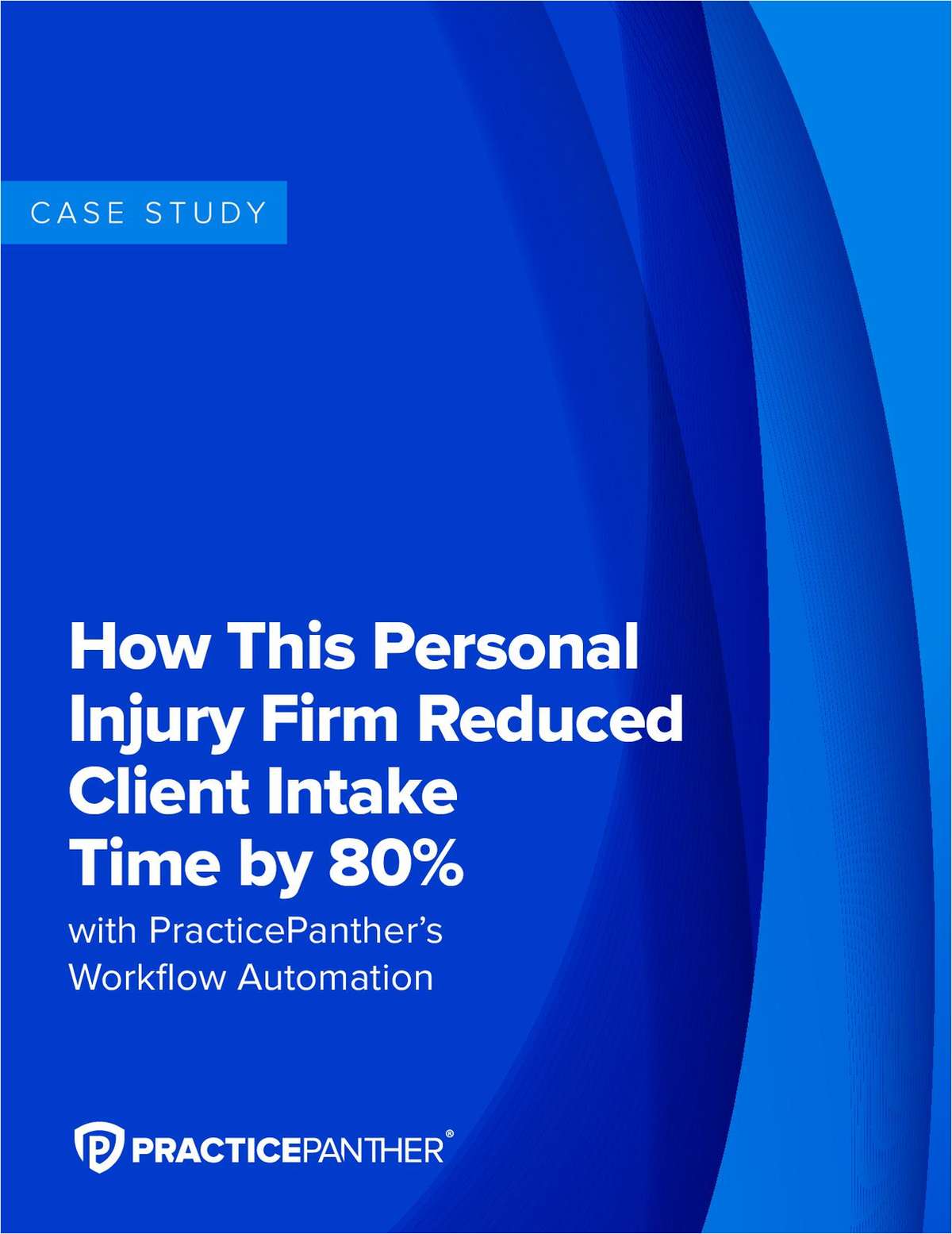 (Photo: Shutterstock.com)
(Photo: Shutterstock.com)Evolving Nature of Functional Claiming in Software-Related Inventions
The line between promoting and stifling innovation can become a bit fuzzy. In light of evolving statue application, patent practitioners should be careful, write Peter Sistare and Maya Yusim of Drinkler Biddle.
June 05, 2019 at 12:28 PM
6 minute read
One purpose of the patent system is to promote, not stifle, innovation. This line between promoting and stifling innovation can become a bit fuzzy. For example, patentees seek to protect functionality of their inventions by use of functional claim limitations that describe claim features in terms of their results without providing any specificity as to what the features are or how the claimed results are accomplished. On the face of it, such functional claim limitations may cover all ways of accomplishing the claimed results, including ways that are unknown at the time of the invention, which may deter others from attempting to invent improved ways of achieving the results.
Congress recognized this potentially detrimental effect of functional claiming and in the Patent Act of 1952 introduced a statute that limited the scope of a functionally claimed limitation to cover “the corresponding structure, material, or acts described in the specification and equivalents thereof.” This statute, currently codified under 35 U.S.C. § 112(f), has remained essentially unchanged since its inception. But, as with many aspects of patent law, application of the statute has evolved and particularly in more recent years with the proliferation of patents directed to software-related inventions.
 Peter Sistare
Peter Sistare
Software may conventionally be thought of as being inherently functional, making it particularly attractive for software-related inventions to be claimed in terms of function rather than structure. To obtain broad protection for software-related inventions, patent drafters often attempt to claim the invention in terms of its function but in a way that does not evoke interpretation under § 112(f). Such claims may allow patent holders to assert their rights against products or services that perform the claimed functions, even if the functions are performed very differently from the the manner in which the patented invention performs them. However, if a claim limitation is interpreted to fall under § 112(f), despite the patent drafter's intention, then the scope of the claim limitation is reduced to what is described in the specification. Even worse, if the specification is deemed to not provide sufficient disclosure of a structure, the claim may be invalidated for being indefinite under § 112(b) for failing to particularly point out and distinctly claim the invention.
A question then is whether a claim limitation does in fact use purely functional claim language and therefore should be interpreted to fall under § 112(f) to rightfully limit its scope to structures disclosed in the specification. Until recently, there was a strong precedential presumption that § 112(f) should not apply to a claim limitation that does not expressly use the terms “means” or “step.” Then came Williamson v. Citrix Online with an en banc decision that overruled the previous application of the “strong” presumption, thereby expanding the universe of claim limitations that fall under § 112(f). Williamson also addressed the question of sufficiency of disclosure of structure corresponding to functional claim limitations. In this regard, the Williamson decision agreed with established precedent that computer-implemented functional limitations require disclosure of a particular algorithm that performs the claimed function.
The United States Patent and Trademark Office is taking notice of the evolving application of § 112(f). Earlier this year, USPTO issued guidelines for examining claims directed to computer-implemented inventions, including identifying and construing computer-implemented functional claim limitations. The guidelines extensively rely on the decisions in Williamson and other recent cases in the realm of computer-implemented inventions. For example, citing to Williamson, the guidelines reiterate that the presumption that § 112(f) does not apply if the term “means” is not expressly used is overcome when “the claim term fails to 'recite sufficiently definite structure' or else recite 'function without reciting sufficient structure for performing that function.'”
 Maya Yusim
Maya Yusim
According to the guidelines, in such cases, “a substitute term can act as a generic placeholder for the term 'means' where that term would not be recognized by one of ordinary skill in the art as being sufficiently definite structure for performing the claimed function.” Interestingly, while the guidelines provide a list of example nonstructural generic placeholders that may evoke § 112(f), the guidelines merely remind that there is no fixed list of words that always avoid § 112(f) interpretation. The guidelines also address definiteness of computer-implemented functional claim limitations and emphasize the requirement of disclosure of a sufficient algorithm to fully perform all computer-implemented specialized functions recited in the claim.
In light of the evolving application of § 112(f), patent practitioners should be careful when drafting claims that recite function. Purely functional claim limitations can be useful, because such claim limitations can capture in a single claim various specific structures described in the specification. If this is the intent, the claim drafter should use functional claim language that clearly falls under § 112(f).
On the other hand, if the claim drafter's intent is that of a broad claim that is not limited to disclosed structures, then care should be taken to ensure that interpretation under § 112(f) is not evoked. For example, terms having sufficiently definite structure for performing the claimed function should be used. Further, whether interpretation under § 112(f) is or is not intended, the specification should include at least one sufficiently detailed algorithm (or, better yet, multiple variations of the algorithm or multiple different algorithms) that performs the entire claimed function. If interpretation under § 112(f) is intentionally or unintentionally evoked, such detailed description would serve to not only ensure that adequate structure is provided for the claim to withstand scrutiny for definiteness under § 112(b), but also to enable broader scope of the claimed limitations.
Peter J. Sistare, a partner at Drinker Biddle & Reath in Washington, D.C., counsels his clients on patent law in the mechanical and electrical technologies. Maya Yusim, a patent agent in Chicago at Drinkler Biddle & Reath, secures patent protection in the fields of electronics and software, with a particular emphasis on wireless communication and networking technologies.
This content has been archived. It is available through our partners, LexisNexis® and Bloomberg Law.
To view this content, please continue to their sites.
Not a Lexis Subscriber?
Subscribe Now
Not a Bloomberg Law Subscriber?
Subscribe Now
NOT FOR REPRINT
© 2024 ALM Global, LLC, All Rights Reserved. Request academic re-use from www.copyright.com. All other uses, submit a request to [email protected]. For more information visit Asset & Logo Licensing.
You Might Like
View All
Pre-Internet High Court Ruling Hobbling Efforts to Keep Tech Giants from Using Below-Cost Pricing to Bury Rivals
6 minute read
How Latham & Watkins Is Using Online Training to Expand the Legal Pipeline
9 minute read
So You Want to Be a Tech Lawyer? Consider Product Counseling

Judge Rejects Meta’s Plea to Send FTC Antitrust Suit to Trash Heap
Trending Stories
- 1Jimmy Carter’s 1974 Law Day Speech: A Call for Lawyers to Do the Public Good
- 2Second Circuit Upholds $5M Judgment Against Trump in E. Jean Carroll Case
- 3Clifford Chance Hikes Partner Pay as UK Firms Fight to Stay Competitive on Compensation
- 4Judicial Conduct Watchdog Opposes Supreme Court Justice's Bid to Withdraw Appeal of Her Removal
- 5Lessons in Mediation & Negotiation: Attorneys' Reflections on Jimmy Carter
Who Got The Work
Michael G. Bongiorno, Andrew Scott Dulberg and Elizabeth E. Driscoll from Wilmer Cutler Pickering Hale and Dorr have stepped in to represent Symbotic Inc., an A.I.-enabled technology platform that focuses on increasing supply chain efficiency, and other defendants in a pending shareholder derivative lawsuit. The case, filed Oct. 2 in Massachusetts District Court by the Brown Law Firm on behalf of Stephen Austen, accuses certain officers and directors of misleading investors in regard to Symbotic's potential for margin growth by failing to disclose that the company was not equipped to timely deploy its systems or manage expenses through project delays. The case, assigned to U.S. District Judge Nathaniel M. Gorton, is 1:24-cv-12522, Austen v. Cohen et al.
Who Got The Work
Edmund Polubinski and Marie Killmond of Davis Polk & Wardwell have entered appearances for data platform software development company MongoDB and other defendants in a pending shareholder derivative lawsuit. The action, filed Oct. 7 in New York Southern District Court by the Brown Law Firm, accuses the company's directors and/or officers of falsely expressing confidence in the company’s restructuring of its sales incentive plan and downplaying the severity of decreases in its upfront commitments. The case is 1:24-cv-07594, Roy v. Ittycheria et al.
Who Got The Work
Amy O. Bruchs and Kurt F. Ellison of Michael Best & Friedrich have entered appearances for Epic Systems Corp. in a pending employment discrimination lawsuit. The suit was filed Sept. 7 in Wisconsin Western District Court by Levine Eisberner LLC and Siri & Glimstad on behalf of a project manager who claims that he was wrongfully terminated after applying for a religious exemption to the defendant's COVID-19 vaccine mandate. The case, assigned to U.S. Magistrate Judge Anita Marie Boor, is 3:24-cv-00630, Secker, Nathan v. Epic Systems Corporation.
Who Got The Work
David X. Sullivan, Thomas J. Finn and Gregory A. Hall from McCarter & English have entered appearances for Sunrun Installation Services in a pending civil rights lawsuit. The complaint was filed Sept. 4 in Connecticut District Court by attorney Robert M. Berke on behalf of former employee George Edward Steins, who was arrested and charged with employing an unregistered home improvement salesperson. The complaint alleges that had Sunrun informed the Connecticut Department of Consumer Protection that the plaintiff's employment had ended in 2017 and that he no longer held Sunrun's home improvement contractor license, he would not have been hit with charges, which were dismissed in May 2024. The case, assigned to U.S. District Judge Jeffrey A. Meyer, is 3:24-cv-01423, Steins v. Sunrun, Inc. et al.
Who Got The Work
Greenberg Traurig shareholder Joshua L. Raskin has entered an appearance for boohoo.com UK Ltd. in a pending patent infringement lawsuit. The suit, filed Sept. 3 in Texas Eastern District Court by Rozier Hardt McDonough on behalf of Alto Dynamics, asserts five patents related to an online shopping platform. The case, assigned to U.S. District Judge Rodney Gilstrap, is 2:24-cv-00719, Alto Dynamics, LLC v. boohoo.com UK Limited.
Featured Firms
Law Offices of Gary Martin Hays & Associates, P.C.
(470) 294-1674
Law Offices of Mark E. Salomone
(857) 444-6468
Smith & Hassler
(713) 739-1250










